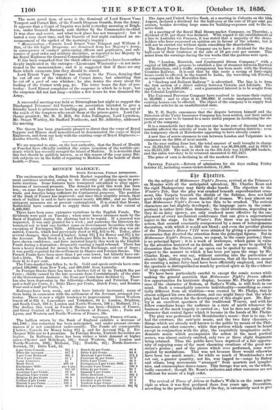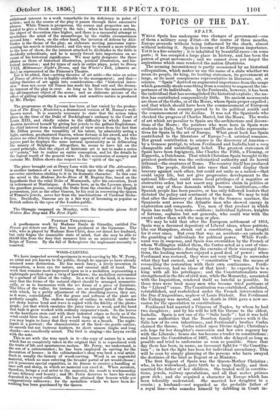The revival of Tinwn of Athens at Sadler's Wells is
on the same prin- ciple as when it was first produced there four years ago. Decoration, according to the prevailing fashion of the day, is extensively used to give additional interest to a work remarkable for its deficiency in point of action; and in the course of the play it passes through three successive phases. While Timon is prosperous, the scenes and properties are in- tended to give a Greek reality to the tale; when he becomes a recluse, the object of decoration rises higher, and there is a successful attempt to symbolize the mind of the misanthrope by the visible circumstances around him : when, on the other hand, the invasion of Athens by Alci- biades is the theme of the play, an elaborate moving panorama repre- senting his march is introduced; and this may be deemed a mere tribute to the love of show, for the interest attached to Alcibiades in the fable is decidedly subordinate, and he is merely forced into importance on ac- count of his historical significance. We may aptly designate the three plisses as those of historical illustration, poetical illustration, and his- torical intrusion; and for types of each in entire plays, point to Henry FITT, Midsummer Night's Dream, and the Winter's Tale, (observe or- der,) as represented at the Princess's Theatre. Let it be added, that—setting theories of art aside—the mice en scene of Tinton of Athens is highly creditable to the management; and that— taking theories of art again into consideration—the "historical intru- sion" does not occur till Timon has made his final exit and the drama- tic interest of the play is over. As long as he lives the misanthrope is the all-important object of the scene; and an elaborate picture of the effect of galling ingratitude on a noble and sensitive nature is produced by Mr. Phelps.



























 Previous page
Previous page